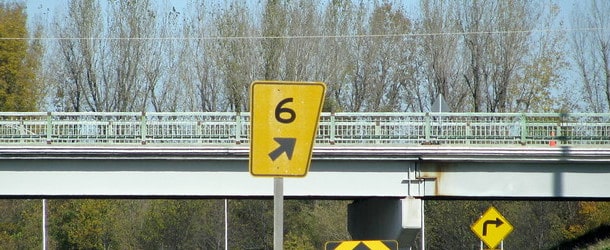Are Mortgage Rates Heading to 6%?

Welp, despite my calls for a reversal, or a correction of sorts, mortgage rates keep climbing higher.
The trend is decidedly not anyone’s friend when it comes to low interest rates.
And it’s clear that the current environment is up, up, up, even if conventional data and news tells it should be down, even just a little bit.
What I’m getting at here is it doesn’t seem to matter what’s happening, or what’s being said. Rates are simply going up and not down.
Does this mean a 6% 30-year fixed mortgage rate is just a matter of time?
We Are Trapped in a Rising Rate Environment Right Now
At the moment, mortgage rates are trending higher, no question about it.
When you get into a trending environment like this, there’s not much you can do to reverse it.
Even if stocks fall, and bonds should rise, they don’t. And even if the Fed comes out with a softer-than-expected stance, it’s still not enough to move the dial lower.
Ultimately, banks and mortgage lenders are uber-cautious right now, and that means either holding firm or simply increasing rates.
No one wants to get caught out by offering too low of a mortgage rate, only to see rates climb even higher the next day or week.
As such, they’re all being very defensive when it comes to pricing, erring on the side of higher as opposed to lower.
The latest evidence of this came right after the Fed announcement regarding its 50-basis point increase to the target federal funds rate.
This was widely expected, and some even thought a 75-basis point increase was possible.
Additionally, they provided details of their balance sheet normalization, which is the shedding of the billions in mortgage-backed securities (MBS) they currently hold.
That too was a relatively dovish announcement, revealing that they’d reinvest less of the proceeds from principal payments, as opposed to outright selling MBS.
This “good news” led to a big stock market surge and price improvements from mortgage lenders.
But it was short-lived, with the stock market bounce turning negative the next day. And rates also resumed their upward climb.
Why? Because everyone seems concerned with the longer view of rising inflation, and simply doesn’t care if we get some small wins along the way.
Patience Is a Virtue Until We Get Through This Ugly Stretch
Mortgage rates seem to ride on momentum, whether it’s up or down. Over the past many years, they were on a major downward trajectory.
Both the 30-year fixed and 15-year fixed hit all-time record lows and kept defying expectations year after year.
The Fed mostly engineered that via Quantitative Easing (QE), which it is now reversing via normalization.
So it makes perfect sense for mortgage rates to rise. But similar to how low they went, they now appear to be overshooting the mark higher.
The 30-year fixed is currently pricing around 5.625%, which is nearly double, yes double, the ~3% rate you could receive in late 2021.
That seems a bit extreme to me, and would call for some kind of correction, despite the Fed’s new, aggressive anti-inflation stance.
But as noted, mortgage rates get stuck in a pattern and that’s higher highs, as opposed to ebbs and flows.
There’s been no relief, and it might get worse before it gets better. Chances are we will see 30-year fixed mortgage rates hit 6% before they return to 5%.
It just feels inevitable, whether fair or not. If it happens, it’d be the first time since May 2008.
Those who are buying a home will need to be patient, or look into alternatives, such as the 5/1 ARM or 7/1 ARM, which are both providing reasonable discounts now.
I still believe mortgage rates will improve in the somewhat near-future, whether that’s later this year or in 2023.
However, I am also coming to terms with the fact that the higher mortgage rate train simply can’t be stopped right now.
This was evidenced by the Fed’s recent announcements, meaning it would take something truly out of the ordinary to stop the carnage.
Still, I am holding out hope for a return to more rational rates in the next 12 months.
As such, one strategy could be to go with an adjustable-rate mortgage until the dust settles, then refinance it to a 30-year fixed if you want that stability long-term.
Comments are closed.